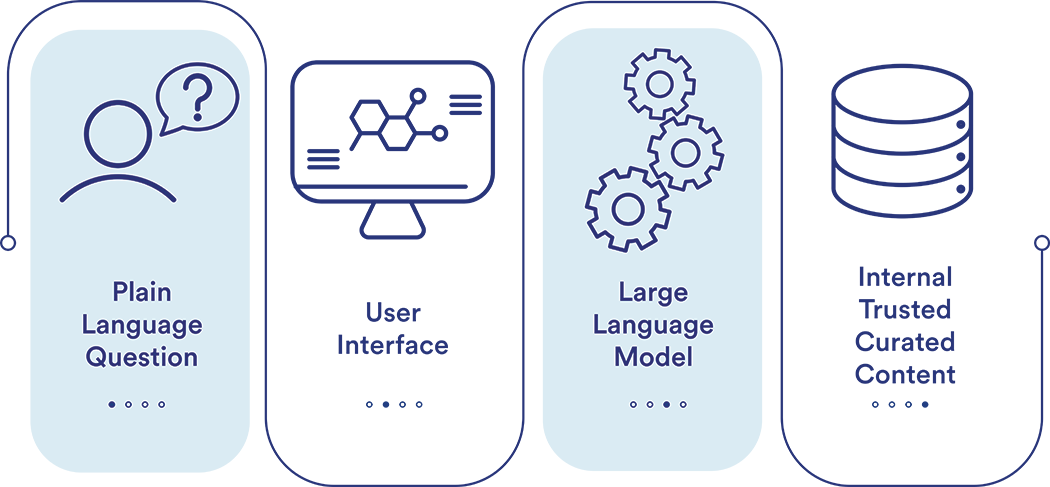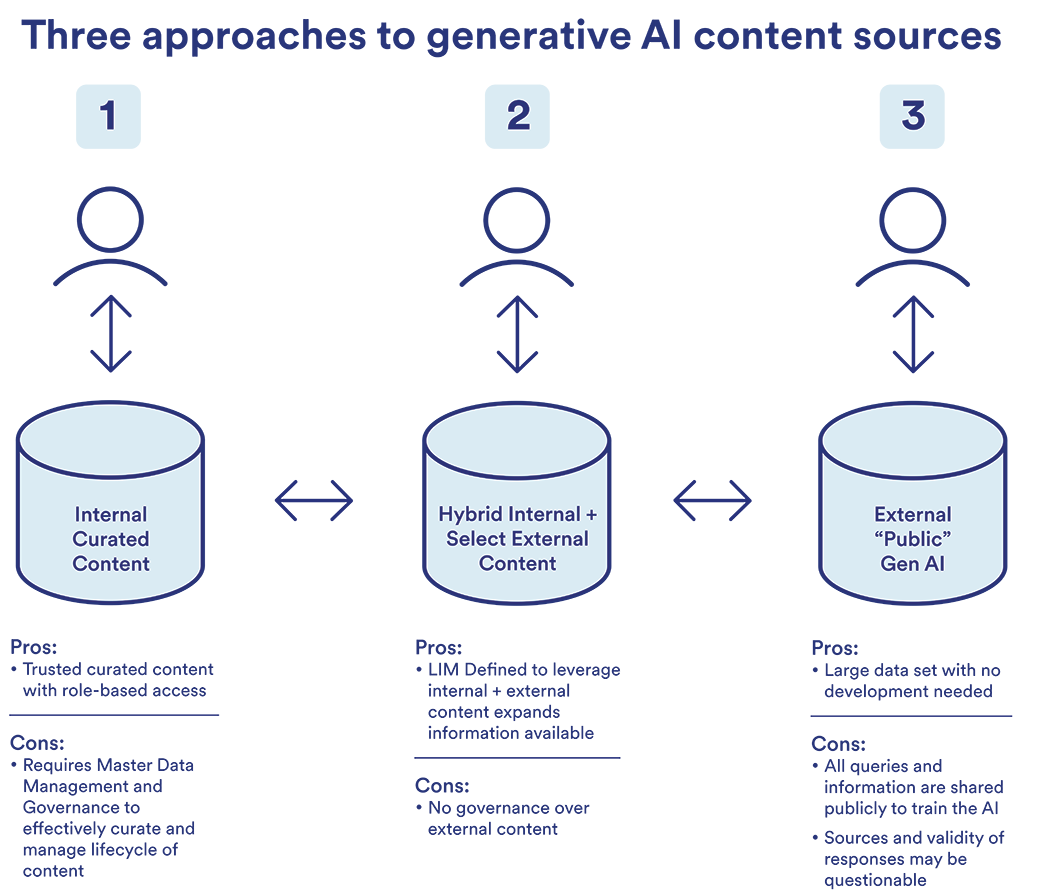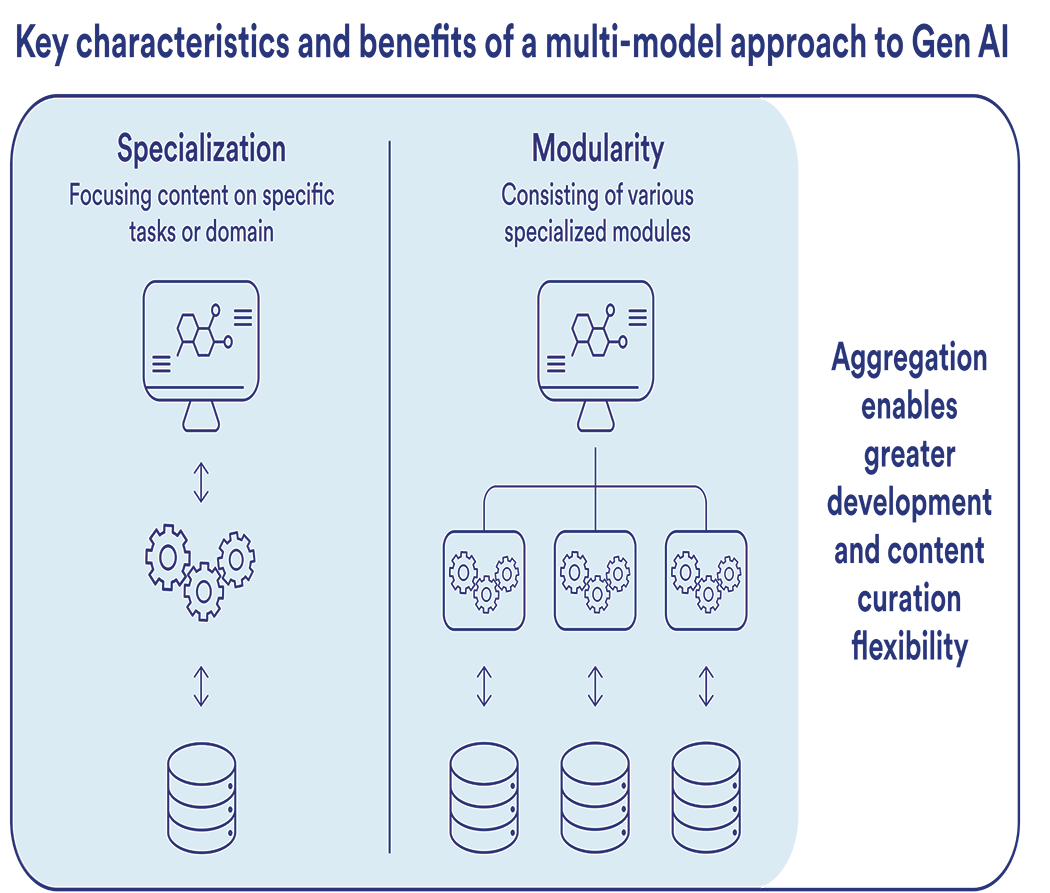Practical steps to implement AI in health care facilities management

Image from Getty Images
Technology seems to advance at an hourly pace these days, with generative artificial intelligence (AI) leading in explosive growth and adoption in the past year. Free and open-source tools such as ChatGPT, Microsoft Copilot and Google’s Gemini (formerly named Bard) have shown how generative AI can be used for learning, content generation, coding and more, prompting many industries and organizations to examine how AI can best benefit their operations.
The health care field and the facilities within it are no different. There is a lot of hype about AI in clinical health care, from revolutionizing disease detection and drug discovery to managing chronic diseases and enhancing health literacy. However, it is not the lifesaving, patient-focused technological implementations that are going to change the health care world today. Rather, it is the five- to thirty-minute time-saving tasks that are fundamentally shifting and improving the work of health care.
AI use-case examples
Hospitals nationwide have already begun to see results from integrating AI’s capabilities to increase efficiencies in equipment maintenance and resource allocation optimization, support safety and emergency response, and more. AI has broad appeal, but the facilities that integrate new tools strategically ensure the best, safest use. It’s imperative for facilities to ask the following questions as they explore AI adoption:
- What kinds of AI are available to facilities and what are some specific use-case examples?
- What policies need to be put in place to safeguard confidential information when using AI?
- How will employees be trained to use AI technology?
- What value will teams and facilities gain from AI capabilities?
Health care facilities across the U.S. have benefited from small AI innovations. It’s important to remember that not all facilities are created equal, and one location’s best uses for AI may vary from others. The following use-case examples have been incorporated in all types of health care facilities, from rural hospitals to urban care centers.
Access existing internal information
Hospitals and ambulatory care centers are complex buildings that require compliance with stricter codes and regulations than the average commercial building. Large, complex buildings require comprehensive safety manuals to protect everyone building, renovating and working within the facilities. These can be massive — 800 to 900 pages outlining everything from electrical outlet clearance to fire door thickness and evacuation procedures. When a single manual is that long, a table of contents can only be so helpful when finding exactly what you need.
With AI, hunting for the exact passage needed and interpreting the generic language is a thing of the past. Now, a facility worker asks a direct question and receives the answer in mere seconds. For example, during a recent hospital remodel in Indianapolis, an in-house electrician needed to relocate an outlet. Rather than scrolling to find the outlined regulation, they typed: “How far does an outlet need to be from exterior windows and bathroom doors?” Generative AI pulled the measurements from the manual, cited the page numbers on which they were found and added a helpful link to a section on special considerations when rerouting outlets.
Request recovery assistance following an emergency
Following a hurricane, tornado or other natural disaster, the work for some facilities team members is just beginning. The Federal Emergency Management Agency (FEMA) provides aid to state, local, tribal and territorial governments, as well as certain private nonprofit organizations, to respond to and recover from major emergencies. For facilities to receive reimbursements for repairs and other dedicated funds from FEMA, facilities management teams need to provide the most accurate data possible. This includes data on the facility before the disaster, measurement of impact and damage, insurance policy information and more.
AI gathers pre-disaster and insurance information quickly and seamlessly from different sources and brings it together in one place for review, citing dates and times at which the “before” information was captured and organizing it based on user input. This was helpful last year when Hurricane Idalia was moving through the Gulf of Mexico toward Florida. Health care facility workers used AI to proactively pull applicable information in the event of major damage when the storm made landfall, and they also used AI to monitor the storm and project where it was likely headed.
FEMA will reimburse 75% to 100% of a health care system’s costs for post-disaster services such as debris removal, overtime pay to workers, procurement of special equipment like chainsaws or generators and repairs to damaged equipment or infrastructure. To successfully receive FEMA’s full assistance, a facility must provide all the correct receipts, photos and documentation of storm preparation and recovery. AI is a key tool when doing so.
It is important to note that disaster recovery is not a fully automated process, nor should it be. AI is as good as the data structure on which it is built. It can reliably pull numbers from disparate facility systems and present them together, but it cannot detect if a number is incorrect. If a facility purchased a mobile diesel generator for $50,000 but it was input incorrectly at $5,000, the AI will not understand that the number is too low. Of course, humans should double-check their work when inputting it into systems, but they also need to double-check the AI’s work. Humans are integral to the health care system, and that includes data review.
Analyze and digitize data
Extending the life of facility equipment with proactive maintenance is often a priority for maintenance teams and facility leadership. It lowers the chances of emergency repairs, equipment runs more smoothly over time, and it ultimately saves money in repairs, replacements, or emergencies. Today, it is safe to say that if a health care facility isn’t digitally tracking its compliance updates and repair schedules, it should be well on its way to doing so. Digital software can convey data points graphically, including heating, ventilating and air-conditioning (HVAC) maintenance logs, weather patterns and long-term cost analysis. But what if teams want to look at how each of those graphs interacts with one another and make predictions for the future?
A health care facility in the Northeast did just that using generative AI to turn complex data into easy-to-understand language and digestible graphs. The team wanted to examine how to extend the life of their facility’s HVAC system and potentially save money throughout the system’s duration. The facility staff used AI to compare maintenance at the health care system’s other facilities to HVAC performance in key areas and then compared that to typical weather patterns in the region and ongoing maintenance needs. AI compared this data directly with the first facility’s maintenance requirements and then compared that with warranties and recalls on the other facilities’ HVAC systems. AI was able to report the current status of all the facilities' HVAC systems across the board, and it also was able to insert different brands’ products and compare different hypothetical scenarios over time.
There are many of these insights through dashboards today, and diligent data combers can compare several at a time. However, the ability to compare all of them at once and project future needs while integrating changing variables in a few moments — without staff having to make calculations themselves — is a new level of insight that can be accessed by anyone at any time.
Preparation and implementation
Generative AI is not a system that can be implemented into a health care system’s functions overnight. Security concerns related to patient data through the Health Insurance Portability and Accountability Act and proprietary hospital metrics alone require a deliberate and thorough approach.
It is imperative that health care systems’ information technology teams work with leadership and AI providers and developers to ensure proper parameters are in place and employees receive thorough training.
Policies and safeguards
Not all AI is created equally — there are different types of AI to consider. A majority of people are familiar with ChatGPT, which is an open, or public, AI platform. Health care organizations’ top concern when considering how and if public AI solutions analyze their information is privacy. Information is no longer secure once it is entered into public-facing AI tools, therefore organizations must be responsible for implementing AI-usage policies to ensure internal or confidential information does not find its way onto open platforms. Providing public AI with any confidential data could jeopardize health care employees, patients and others.
Fortunately, open AI is not the only type of AI out there. Health care systems can leverage private and secure generative AI solutions that meet specific business needs. Hybrid AI solutions also exist where public information can be pulled from the internet to add context to internal, private data without that data feeding back out to the public. These create much more palatable approaches for organizations to gain the advantages of open AI technology without compromising proprietary data.
Employee training
To ensure employees can understand and successfully use AI tools, they need to be properly trained to use them effectively. Before a facility or health system can gain usable insights and value from AI, everyone in the organization needs to understand how to use AI, what it can and cannot do, and how to apply AI-generated insights to support their work.
First, employees should understand that AI is not going to take over job functions completely. Rather, AI technology increases employees’ efficiency by automating certain tasks to help them make better-informed decisions more quickly. The five minutes an employee saves by asking AI to aggregate the past six months of maintenance logs is the workplace-altering technology that health care employees will benefit from most today.
However, as also noted above, the assistance employees receive from AI should always be validated by humans and interpreted in the context of the human experience with personal judgment. If those maintenance logs were recorded correctly, as having been validated by maintenance employees, the results are likely trustworthy. Facilities that have successfully implemented AI tools have made it a priority to train employees on how to validate the information AI is receiving and outputting to ensure accuracy.
Some employees are skeptical of using AI and trusting its outputs. That is not a bad thing when health care systems are in the phase of conducting initial tests to measure the effectiveness of new solutions within their operations. However, as employees become more comfortable using the technology, leaders should challenge them to experiment with the kinds of insights AI provides from existing data. Encouraging curiosity is a valid training tactic. With the right safeguards in place and a solid understanding of how AI tools operate, anyone in a health system should be able to find new insights from existing data.
Exploring AI’s full potential
AI is here, but adoption and integration should be deliberate and account for some inherent public distrust of AI technologies. The Pew Research Center found that 37% of Americans “think using AI in health and medicine would make the security of patients’ records worse.” Further, “Americans are more concerned that health care providers will adopt AI technologies too fast rather than too slowly,” according to the Pew research. While this study was focused on clinical applications of health care and the provider-patient relationship, these concerns are valid across all levels of health care, including facilities. It is important that leadership take this into account when exploring AI.
That said, health care organizations can either embrace AI and build proper safeguards or ignore it at the risk of being left behind by competitors and the health care field as a whole. Only the facility’s or health system’s leadership and teams know how AI can be applied to operations, but the field is still discovering what additional insights can be gleaned from AI. It’s worth it to begin the conversation, weigh the pros and cons and consider the next steps.
Related article: Additional AI use-case examples
Artificial Intelligence (AI) can be integrated into nearly every facility system to improve insights on everything from energy usage to customer support. Below are additional examples to explore when considering AI adoption:
- Predictive/preventative maintenance
- Energy usage and environmental stewardship
- Enhance resource management and scheduling
- Improve customer support
- Enhanced Security
At some facilities in Texas, AI algorithms monitor equipment and systems to help predict potential issues. This is then included in preventive maintenance schedules before problems arise, helping avoid the risk of failure or service interruption.
AI analyzes data from a variety of sources, such as temperature sensors and occupancy sensors, to optimize a building's energy usage. Texas hospitals have used this to great advantage during heatwaves to reduce energy costs and improve the sustainability of the facility.
AI augments facilities’ computerized maintenance and management systems to help automate skill-based scheduling, task management and resource planning. This provides additional insights and increases the efficiency and time to respond to customers.
While chatbots are not new, combining them with natural language model AI tools can greatly improve customer experience and satisfaction by responding to inquiries in a common language quickly and easily while also providing additional information or sources of information. This includes within a system when a doctor has a question about an internal facility system or needs to report a repair. AI can also provide leading questions to increase the accuracy of service requests, such as automatically asking for the floor and room number where service is needed.
Cybersecurity threats continue to grow in volume and complexity, so it is no surprise that AI-enabled security solutions are in high demand as providers seek to grow their services. The value proposition of AI security is that it quickly detects additional patterns of potential security threats and triggers notifications to security professionals with recommendations for action. For some Kansas health care facilities, this helped to enhance their overall security and the services they provide to customers.
JD Duigou serves as chief information officer for Medxcel, an integrated facilities management organization with a sole focus on improving health care environments by increasing efficiencies while reducing spend. He has more than 20 years of IT experience and leadership, having led development, delivery and support of advanced technology solutions for national and global organizations. JD is a member and participant in several industry organizations including the Healthcare Information and Management Systems Society, College of Healthcare Information Management Executives and Information Technology Senior Management Forum.




